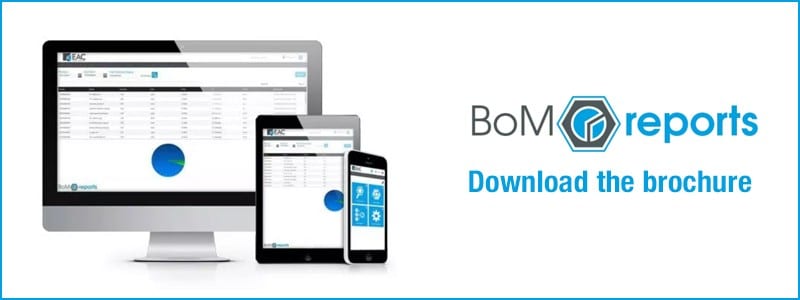Why is it important to manage your product Bill of Materials (BoM) in a PLM (Product Lifecycle Management)? This is a tough question to answer across the board for every company, but this article breaks down what you need to know.
The level of BoM management in PLM can be dependent on your companies’ products, downstream systems, and product development processes.
With that in mind, here are some general benefits and reasons to manage the creation of your product BoM in PLM.
The benefit of bill of materials management in PLM
PLM in nature is meant to be a tool to help engineering manage their production date while allowing dynamic collaboration and change control throughout the product development cycle.
The data managed in a product lifecycle management system includes CAD and BoM information, as well as additional supporting product information and documentation.
PLM functionality typically allows an organization to store any and all product information in a structured manner. The structured manner is what properly represents the product within all stages of the product’s development.
This includes everything from initial design requirements, to manufacturing requirements and process plans, to quality assurance documents- all linked to a single product structure.
This gives you the ability to graphically see a truly complete representation of any and all products managed within the PLM system.
In addition, many of the top PLM systems (such as PTC Windchill) give you the ability to manage different views of a single bill of material.
For instance, you could see the design or engineering view of the structure and all design information needed for that BoM product structure.
You would also have the ability to look at a manufacturing view that has the structure defined in a way to support the best possible manufacturing process, while it also links to any supporting information and work instructions.
Additionally, you could see a service BoM that represents exactly what is on-site or on the hands of a customer, with linked product information specifically related to service or support (such as a service repair or product manual).
These systems focus on tracking and managing all cost and profit throughout the process.
Because of this, changes are tightly controlled and require significant steps to ensure proper applications across the system.
There are also few systems that allow for full product representation inside of ERP or MES as outlined above. Nor do they fully support many different views of the same BoM.
ERP tends to only manage what is required to properly manufacture or sell a product, which does not always represent the full product design or its full breadth of supporting information and documentation.
There many impacts on these fundamental differences.
When to use PLM for BoM Management
Here are some general concepts as to when to use PLM for BoM management.
When your product development is in the dynamic phases that require many changes and updates at each phase gate, your bill of materials should be primarily managed in PLM.
If your product requires specific requirements management, detailed manufacturing, quality work instructions, or an intensive manufacturing process, it’s in your best interest to use product lifecycle management for your BoM.
At the very least, all of your product information should also be managed, or linked to your product lifecycle management system to ensure full accountability to all information updates required in the instance of change.
Integrating ERP and PLM
At a minimum, if you have an ERP system it’s important to integrate your system together with PLM.
It’s essential to establish key integration points between your enterprise systems that send needed information back and forth to your enterprise resource planning solution. This will help you properly execute new product releases and changes.
By integrating your systems, your ERP processes will ensure all proper tasks and functions are executed in your ERP or MES systems.
From there, your ERP to PLM system integration would send information back to your PLM system to close the loop.
These are our best practices to help you get ahead and to take product data further. We would love to hear about your thoughts about this topic and answer any additional questions you might have. Feel free to drop a comment below or leave an inquiry under let’s talk.
Looking for an easy way to quickly assess your bill of materials and ensure projects stay on-time and on-track?
